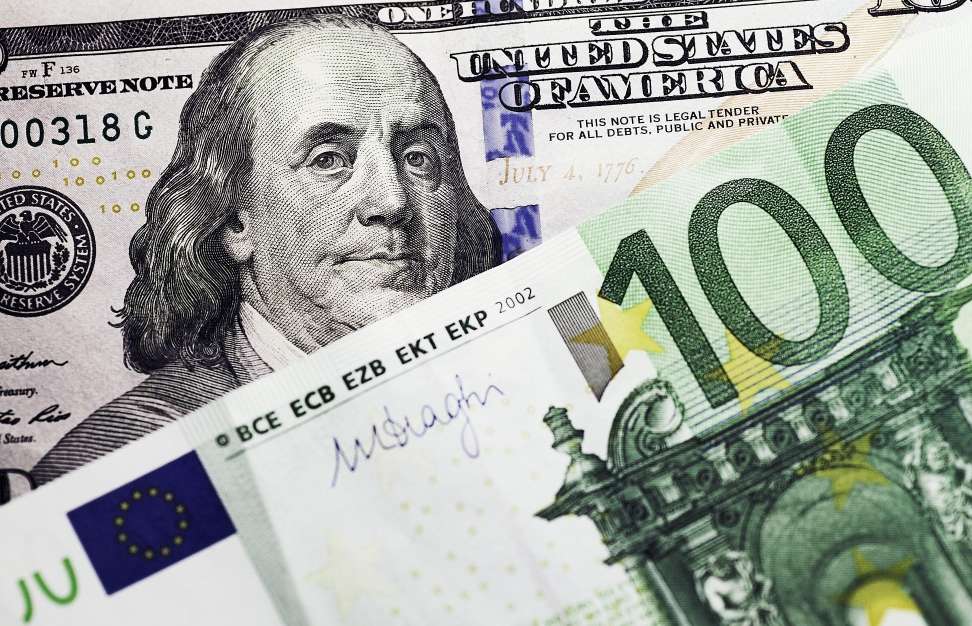Is the U.S. Struggling to Endure the Financial War?
Advertisements
Amidst the ongoing cycle of interest rate reductions, the financial landscape in the United States reveals some perplexing trends that raise eyebrows among economists and analysts alike. Typically, one would expect that a series of interest rate cuts would lead to a depreciation of the dollar; however, we have observed a controversial rise in the U.S. dollar index from 100 to 110 during this period. This unprecedented behavior contradicts fundamental financial principles and prompts scrutiny of the broader economic implications.
Interestingly, these cuts appear to have backfired, mimicking the outcomes traditionally associated with interest rate hikes. Such a paradox is particularly troubling for the American economy, especially concerning U.S. Treasury bonds. The rising cost of borrowing threatens to push the federal government into a precarious position, where the risk of default begins to loom larger on the horizon—as rates escalate, so does the government's financial burden.
The escalating financial tensions between China and the United States have transformed the narrative from a mere question of currency valuation to a complex discourse about the Federal Reserve's strategies in combating the impending U.S. debt crisis and the bubble that has formed in the stock market. As economic indicators become increasingly interlinked in a globalized environment, every shift in policy can trigger ripples across diverse markets.
Recent events point to a potential shift in how the markets interpret the Federal Reserve's position. Reports from Wall Street highlight that even with futures indicating almost no chance of rate hikes until 2025, speculations about a significant reversal of the Fed’s aggressive rate cuts are swirling. This has led to debates about whether the rapid changes initiated last September were misguided or possibly premature.
When the U.S. released its latest economic data, specifically the Producer Price Index (PPI) for December, the results were anticipated with great interest. While the PPI came in lower than expected at 3.3%—slightly below the projected 3.4%—there were nuances in this data that some analysts found troubling. Closer inspection suggested that despite the overall decline in the PPI, certain components within the report pointed towards a potential uptick in core Personal Consumption Expenditures (PCE) inflation, complicating the economic outlook.
Consequently, the reaction from the stock markets was muted; after an initial rise, stocks faltered, with the Nasdaq index again facing losses. Meanwhile, U.S. Treasury bonds experienced a downward trend, and yield rates saw significant upward pressure, hitting a peak of 4.82% intraday. Such developments underscore the notion that the PPI figures might not signify a positive trend after all.

Two major concerns currently predominate Wall Street’s discourse. The first revolves around the possibility that the Federal Reserve may alter its established path of interest rate cuts. Should this occur, it would imply a sustained high-rate environment extending into 2025, triggering liquidity shortages and a sharp decline in asset prices—both domestically and in international markets.
Prior to such a downturn, many traders on Wall Street seem inclined to liquidate their positions in U.S. bonds and stocks in favor of cash holdings, which, paradoxically, has strengthened the dollar index. It's critical to realize that an increase in the dollar's strength does not necessarily translate to a simple victory for the U.S. in its economic standoff with China. On the contrary, concerns surrounding mass sell-offs of U.S. Treasuries could create chaos in global asset pricing denominated in dollars.
Moreover, it's vital to consider the ramifications of a potential collapse in dollar asset pricing on the renminbi. Will an influx of capital into Chinese assets exert upward pressure on the renminbi amidst the upheaval? Looking ahead to the post-2025 landscape, the question of how global asset pricing will be structured might become one of the paramount issues that cap the attention of capital markets worldwide.
The scenario of a bursting bubble in the American stock market is no distant fantasy; it is currently in the making. For the Federal Reserve to manage this phenomenon effectively, it may feel compelled to enact substantial rate cuts and resume quantitative easing. However, the danger in doing so lies in inflating an already precarious asset bubble.
Yet, we must question whether the Federal Reserve still possesses the capacity to uphold stock market valuations in light of mounting economic pressures. The bond market paints a troubling picture, as domestic and international investors continue to offload U.S. Treasury bonds at alarming rates. Reports suggest that even leading financial institutions in Wall Street are wary of the ramifications of the government’s relentless expansion of debt.
The U.S. government itself is on shaky ground, grappling with a significant fiscal deficit. As the maturity of a large volume of U.S. debt approaches in the 2025-2026 timeframe, a default announcement from the government is becoming less of a hypothetical scenario and more of an imminent reality.
Further complicating the matter is the previous use of the U.S. dollar as a geopolitical tool, resulting in the ceding of trust from global central banks. Since 2022, U.S. authorities have weaponized the dollar, imposing sanctions on various nations. Central banks worldwide have taken note of this risk, subsequently reducing their dollar reserves while increasing their gold holdings. Should the Federal Reserve decide to cut interest rates without careful consideration, it could lead to a surplus of dollars stuck within the U.S. borders and an inflationary spike, echoing the more severe inflationary trends witnessed in 2021.
Finally, the situation is not merely contingent on global monetary authorities but also on impending domestic economic policies such as tariffs. The ramifications of changes in these areas can unleash shifts that reverberate globally.
In summary, projections for the U.S. financial market in 2025 signal substantial instability. These looming risks are beyond the grasp of the Federal Reserve's standard monetary toolbox. Moving forward, the possibility of an abrupt policy shift by the Federal Reserve in the face of a deteriorating dollar situation remains a genuine concern, with the issue of defaulting on U.S. debt mounts significantly.
Leave A Reply